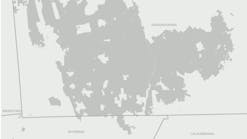The current US secretary of the Interior and US Environmental Protection Agency administrator both emphasized working more closely with state governments during their US Senate confirmation hearings last year. Western Governors Association leaders have offered some suggestions in this regard already.
WGA's chair, South Dakota Gov. Dennis Daugaard (R), and vice-chair, Hawaii Gov. David Ige (D), expressed their disappointment in a Feb. 1 letter to DOI Sec. Ryan Zinke that governors in the West were not consulted before he issued his proposal on Jan. 10 to restructure Interior around watersheds instead of groups of states.
Western governors requested an opportunity to discuss the matter in an Apr. 17, 2017, letter, WGA's leaders added. "Western governors are eager and willing to work with you and your agencies on warranted changes to the departmental structure that would meet DOI's efficiency goals while avoiding unintended consequences," they said.
They also raised 10 important regional boundary questions in an addendum, including why the proposed changes are necessary to achieve the department's goals of reducing conflicts among bureaus, decentralizing decision-making authority, and having a single regional contact point.
"The proposed changes split Colorado, Idaho, Oregon, and Nevada into three regions and California, Montana, New Mexico, Utah, Washington, Kansas, South Dakota, and Wyoming into two regions," the addendum said. "Did DOI evaluate the proposal's impact on the ability of its bureaus to consult, coordinate, and cooperate with states?"
Daugaard and Ige said Western governors hope to work with DOI on this matter. They also asked Zinke to delay implementing any proposed boundary changes and meet with governors to discuss options that both meet DOI's objectives and work for state and local governments.
In a Feb. 12 letter to EPA Assistant Administrator William Wehrum, Daugaard and Ige expressed appreciation for his outreach. They also noted that in the West, high elevations, extreme topographical variations, vast landscapes, and vacillating weather patterns influence air quality. "Pollutant sources, methods of dispersion, and types of impacted areas are very different than those in the eastern US," the governors said.
More actual cooperation
They called for more actual air quality cooperation between EPA and Western states. "In some cases, EPA disregards state expertise and authority over air quality. In all cases, EPA should recognize state authority under the [Clean Air Act] and accord states sufficient flexibility to create air quality programs tailored to individual state needs, industries, and economies," they said.
WGA's leaders then offered 17 recommendations covering coregulation, ozone, exceptional events, regional haze, and wildfires and prescribed fires. They also reiterated that Western governors look forward to working with EPA's Office of Air and Radiation on air quality matters.


